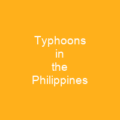
Imagine a place where the sun rises over 7,641 islands, each with its own unique story. Welcome to the Philippines! This archipelagic nation in Southeast Asia is not just a collection of land but a tapestry woven from centuries of history, culture, and natural beauty.
From the moment Spanish explorer Miguel López de Legazpi arrived in 1565, the Philippines began its journey towards modernity. The country’s name itself has evolved over time, changing from “the Philippine Islands” to simply “the Philippines.” This transformation reflects a nation’s growth and identity.
History and Colonization
The early history of the Philippines is as rich as it is complex. Early hominins lived here as far back as 709,000 years ago, with evidence suggesting that Homo luzonensis roamed these lands around 50,000 to 67,000 years ago. The first Austronesians reached the Philippines from Taiwan around 2200 BC, settling in the northern regions.
Spanish Rule and Independence
The Spanish colonization of the Philippines lasted for over 300 years, leaving an indelible mark on the country’s culture and society. The Philippine Revolution began in 1896 after a mass execution sparked revolutionary sentiment. This led to the establishment of the First Philippine Republic, which was eventually overshadowed by the Philippine-American War.
Post-War Developments
The Philippines gained independence from the United States in 1946, marking the end of an era and the beginning of a new chapter. Since then, the country has seen significant political changes, including the rise and fall of various presidents like Ferdinand Marcos and Benigno Aquino III.
Geography and Environment
The Philippines is not just about its 7,641 islands; it’s also a land of diverse ecosystems. The country has eight major types of forests, from dipterocarp to mangroves, each playing a crucial role in the environment.
Biodiversity and Conservation
The Philippines is a megadiverse country with some of the world’s highest rates of discovery and endemism. It’s home to over 13,500 plant species, 235 reptiles, and more than 20,000 insect species. The country has three UNESCO World Heritage sites, including Tubbataha Reef and Puerto Princesa Subterranean River.
Climate and Natural Disasters
The Philippines experiences a tropical maritime climate with three distinct seasons: hot dry, rainy, and cool dry. However, the country is also prone to natural disasters like typhoons and earthquakes due to its location on the Pacific Ring of Fire.
Economy and Development
Today, the Philippines is an emerging market with a growing economy focused on service- and manufacturing-centered industries. The country has made significant progress in economic growth, with an average annual growth rate of six to seven percent since 2010. However, regional development remains uneven, with Manila gaining most new economic growth.
Key Industries
The Philippines is a primary business process outsourcing center and has a high concentration of cellular-phone users. The country’s main export crops include coconuts, bananas, pineapples, and nickel ore. Remittances from overseas Filipinos contribute significantly to the economy.
Energy and Infrastructure
The Philippines relies heavily on geothermal energy for power generation, with the Malampaya gas field providing a major source of power. The country has over 1,800 seaports and is working towards harnessing nuclear energy in the future.
Culture and Society
Philippine culture is a blend of indigenous traditions, Spanish colonial influences, and American cultural legacies. The family remains central to Philippine society, with values like loyalty and care for elderly parents deeply ingrained.
Religion and Festivals
The Philippines has a predominantly Christian population, 89% professing Roman Catholicism. Public holidays are primarily religious festivals, such as Ati-Atihan and Sinulog, which are often celebrated with patron saint honorings.
Education and Healthcare
Education in the Philippines consists of 12 years of schooling (6+4+2), with free public education at the elementary and secondary levels. The country has over 1,975 higher education institutions and a literacy rate of 93.8%. Healthcare is primarily funded through private payments, with government-provided care available as well.
Media and Entertainment
The Philippines has a vibrant media landscape, with TV shows and films regulated by the Movie and Television Review and Classification Board. The country’s film industry began in 1919 and saw a decline in quality films until the 1980s, but critically acclaimed films like Himala were released during this time.
Traditional Arts and Crafts
Philippine art combines indigenous folk art with foreign influences from Spain and the United States. Traditional architecture includes bahay kubo and bahay na bato models, which were influenced by Spanish rule. During the American period, construction of Gabaldon school buildings began in Manila and Baguio, using architectural designs and master plans by Daniel Burnham.
Cuisine
Philippine cuisine is a delightful mix of flavors, with dishes like adobo, lechón, kare-kare, sinigang, pancit, lumpia, and arroz caldo being popular. Traditional desserts include kakanin (rice cakes), which come in various forms such as puto, suman, and bibingka.
Conclusion
The Philippines is a land of endless possibilities, where history meets modernity, culture intertwines with nature, and the spirit of resilience thrives. From its rich cultural heritage to its vibrant economy, this archipelagic nation continues to captivate the world with its unique blend of traditions and progress.
You want to know more about Philippines?
This page is based on the article Philippines published in Wikipedia (retrieved on November 23, 2024) and was automatically summarized using artificial intelligence.







